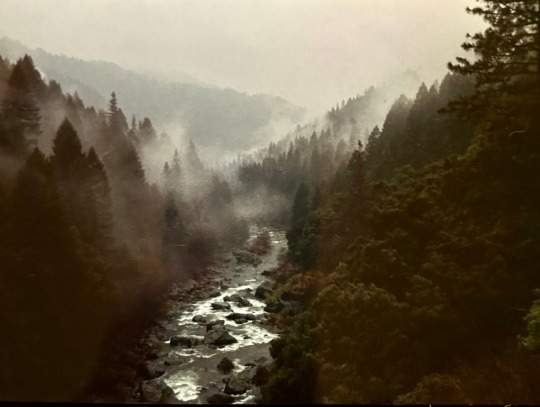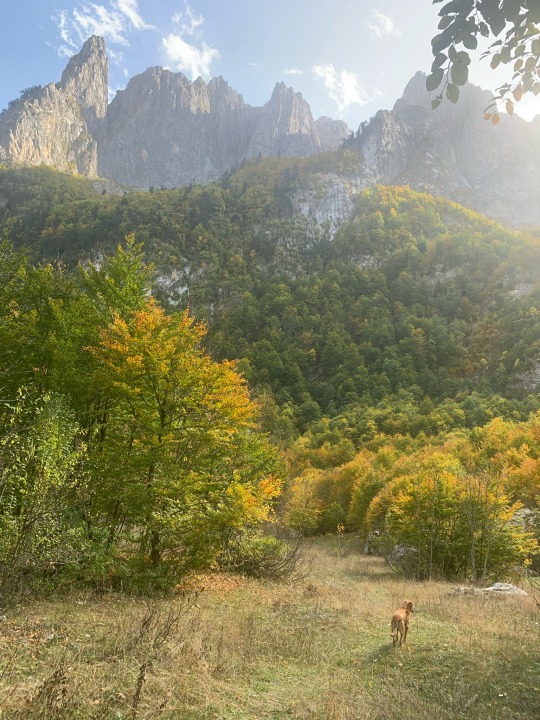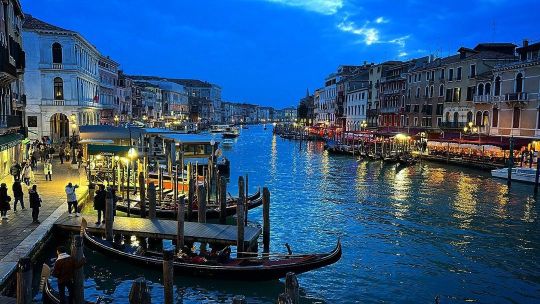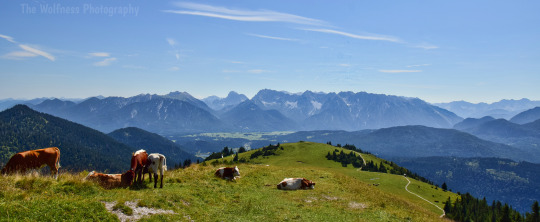#Northern Limestone Alps
Explore tagged Tumblr posts
Text

Zugspitze
Bavaria. Germany
#landscape#landscape photography#nature#nature landscape#nature photography#cloud#clouds#sky#mountain#mountains#Alps#Alps mountains#Bavarian Alps#Allgäu Alps#Ammergau Alps#Ammergauer Alpen#Northern Limestone Alps#snow#mountain peak#Zugspitze#mountainscape#mountain landscape#European mountains#photographer on tumblr#original photography#original photographers#original photography on tumblr#Bayern#Bavaria#Germany
330 notes
·
View notes
Text



2023 Achensee (2) (3) by Ernst Murnleitner
#lakes#fences#flowers#japanese anemone#boats#mountains#karwendel#northern limestone alps#austria#tyrol
1 note
·
View note
Text

The Chartreuse is a pre-Alpine limestone mountain range in the northern French Alps
174 notes
·
View notes
Text
Moth of the Week
Dew Moth
Setina irrorella

Photo credit
The dew moth is a part of the family Erebidae. It was first described in 1758 by Carl Linnaeus. It is thought to have gotten its common name from how the moth hangs from a blade of grass or a leaf when resting during the day. This gives it a transparent look.
Description This species’s wings can vary in colour from cream to yellow. The forewing has 3 lines of black dots across it with the hindwing usually having only one black dot. The underside of the forewing is gray with a yellow margin. The body is black with yellow or black legs.
There are many found variations of this moth:
signata Borkh. - the middle rows of spots are connected by streaks
ab. fumosa Sandb. - has brownish ground colour; found in the north, but also found in Germany.
flavicans Bdv. - has brighter deep yellow wings and the apex of the abdomen is yellow; found in the Mediterranean and Anterior Asia.
nickerli Rebel - paler yellow, the forewing slightly dulled with the exception of the clearer yellow inner margin; found in the Alps and Northern Europe.
andereggi H.-Schiff. - has dark veins on the forewings, appearing like rays; found in the high Alps, and in the higher North.
riffelensis Fall. - considerably smaller, the ground colour is slightly dulled, the black vein-streaks are more numerous, especially the costa and median veins strongly sooty black; found in the high Alps, especially abundant above Zermatt.
lata Christ. - larger with broader wings and paler with very few markings, the hindwing often quite without markings; found in Russia over North Siberia to Kamtschatka.
insignata Stgr., - quite similar to the preceding, but with narrower wings. The forewing also with very few dots, and hindwing without any; found in East Siberia.
Wingspan Range: 27 – 33 mm (≈1.06 - 1.30 in)
Forewing Range: 11 – 18 mm (≈0.43 - 0.71 in)
Diet and Habitat The larva of this moth eat only lichen.
This moth is found in the Palearctic region. Its range starts from Ireland, then spreads south through Europe and east to northern and Central Asia. It can be found in countries such as Siberia, Kamchatka, Chukotka, and northern Mongolia. This species can even live in the limestone Alps up to 2,000 meters above sea level. However, it can not be found in the high north and parts of the Mediterranean region.
It prefers to live in mossy and lichen-covered rock corridors, on chalky and sandy areas and steep, rocky sparse grasslands, rocky coasts, shingle beaches, and calcareous grassland inland. It can also be found in bogs, forest meadows, and on heaths.
Mating Depending on location, this moth can be seen from May to July. It presumably mates during this time. Generations per year not listed.
Predators Not listed. However, the adult males fly in the afternoon, at dusk, after dark, and at dawn. The females are largely nocturnal. These moths are presumably preyed on by nighttime predators such as bats.
Fun Fact The dew moth has four subspecies:
Setina irrorella irrorella
Setina irrorella freyeri (Nickerl, 1845)
Setina irrorella insignata (Staudinger, 1881)
Setina irrorella mediterranea (Daniel, 1964)
Additionally, dew moth caterpillars do not cocoon in trees or foliage but rather in between stones or rocks.
(Source: Wikipedia, Butterfly Conservation)
#libraryofmoths#animals#bugs#facts#insects#moth#lepidoptera#mothoftheweek#Setina irrorella#dew moth#Erebidae
81 notes
·
View notes
Text
Archaeological Site at St Pierre's Cathedral

One of the most significant sites of its kind north of the Alps, it is presented in several specially equipped spaces within the excavations, using cutting-edge museum technologies. The visit thus begins in the 3rd-century BC and leads up to the construction of the current cathedral in the 12th century.
The space under Saint-Pierre Cathedral contains the remains of the many churches that preceded the current structure: the oldest of these dates from the late 4th century, providing evidence of Geneva's pivotal role in the development of Christianity. Furthermore, the excavations have brought to light traces of pre-Christian occupation of the hill: wells, a grain processing area, a likely ceremonial building and an Allobrogian tomb.

This large star-shaped impression, discovered under the Cour Saint-Pierre outside the doorway is what remains of the casting of a bell. It is the diameter, 2.05 metres, that leads us to attribute it to the "Clémence", the greatest bell of the cathedral, cast in 1407 thanks to a gift by Robert of Geneva, Pope at Avignon (antipope) from 1342-94 under the name of Clement VII. The casting of the bell was done in a pit, into which the mould was lowered and then interred, to avoid explosion due to the pressure of molten metal.

The body of a Allobrogian chief was buried down in this tomb. The hole you see dug at the top right of the picture is where someone dug up his head to recover treasure his head may have been adorned with. This dude is having a rough go trying to get some respect in the afterlife, methinks.
Drawing on the left represents what archaeologists believe is being excavated in the picture on the right.



Even today in northern climates, it is often necessary to dry corn after harvesting. One of the service areas, attached to the residence of an important person of the town, could well have been used for this purpose. It was provided with a heating room where very dry air could circulate and so assure long conservation of the cereals found in considerable quantities in this area. This construction antedates the northern cathedral.

Transcription: GENAVA AUG C (?)
Fragment of an inscription
Part of a dedication to the deified city of Geneva.
Limestone. Roman period.



3 notes
·
View notes
Text
Exploring Hidden Gems: Top Destinations for Unforgettable Travel Experiences
Traveling is an exhilarating way to break free from routine, immerse yourself in new cultures, and create lifelong memories. While popular destinations like Paris, Bali, or New York City dominate the headlines, the world is brimming with lesser-known, yet equally breathtaking locales waiting to be explored. These hidden gems not only offer unique experiences but also often come with the added benefit of fewer crowds and a more intimate connection with the destination. Let’s delve into some of the top hidden gems around the world for unforgettable travel experiences Travel and Tourism Companies in Dubai
1. Hallstatt, Austria
Nestled in the Austrian Alps, Hallstatt is a picturesque village that looks like it belongs in a fairy tale. Its serene lake, charming wooden houses, and stunning mountain backdrop make it a perfect escape for nature lovers and photographers alike. Visitors can explore the ancient salt mines, hike through scenic trails, or simply relax by the crystal-clear waters of Hallstätter See. Despite its growing popularity, Hallstatt retains its quaint, idyllic charm, especially during the off-season.
2. Chefchaouen, Morocco
Known as the "Blue Pearl of Morocco," Chefchaouen is a captivating mountain town famous for its blue-painted buildings. Walking through its narrow, winding streets feels like stepping into a dream. The vibrant hues are complemented by the town’s rich history, delicious local cuisine, and artisanal markets. Surrounded by the Rif Mountains, Chefchaouen also offers fantastic opportunities for hiking and connecting with nature.
3. Luang Prabang, Laos
Luang Prabang is a UNESCO World Heritage site that beautifully combines natural beauty with cultural significance. Situated at the confluence of the Mekong and Nam Khan rivers, this small city is home to ornate Buddhist temples, charming colonial architecture, and lush waterfalls. The morning alms-giving ceremony, where monks receive offerings from locals and tourists, is a serene and spiritual experience not to be missed. Kuang Si Falls, a multi-tiered waterfall with turquoise pools, is another highlight for visitors.
4. Faroe Islands, Denmark
Located between Iceland and Norway, the Faroe Islands are a haven for adventure seekers and nature enthusiasts. This remote archipelago boasts dramatic cliffs, cascading waterfalls, and vibrant green landscapes. The islands are also home to puffins and other unique wildlife. Hike the trails of Sørvágsvatn, a lake that appears to hover above the ocean, or visit the charming village of Gásadalur for panoramic views. The Faroe Islands’ untouched beauty promises an unforgettable experience.
5. El Nido, Philippines
El Nido, located on the island of Palawan, is a tropical paradise known for its limestone cliffs, turquoise lagoons, and pristine beaches. Its secluded location and crystal-clear waters make it a haven for snorkeling, diving, and island hopping. Hidden beaches like Secret Lagoon and Big Lagoon offer a sense of discovery, while Miniloc Island provides opportunities to swim alongside diverse marine life. El Nido’s natural splendor rivals that of any well-known beach destination.
6. Matera, Italy
Matera, a city in southern Italy, is famous for its "Sassi" — ancient cave dwellings carved into limestone cliffs. This UNESCO World Heritage site has transformed into a vibrant destination with boutique hotels, artisan shops, and exquisite Italian cuisine. Exploring Matera feels like traveling back in time, with its labyrinth of stone streets and historic churches. The city’s unique charm and cultural significance make it a must-visit for history buffs and architecture enthusiasts.
7. Lofoten Islands, Norway
The Lofoten Islands offer a unique Arctic experience, characterized by dramatic peaks, quaint fishing villages, and fjords. Visitors can witness the mesmerizing northern lights in winter or the midnight sun in summer. The islands also provide opportunities for kayaking, hiking, and fishing. The vibrant red cabins, known as rorbuer, add a touch of charm to the rugged landscape, creating a perfect blend of adventure and tranquility.
8. Salento, Colombia
Salento is a colorful town in Colombia’s coffee-growing region, offering stunning landscapes and a rich cultural experience. The nearby Cocora Valley is home to the towering wax palm, Colombia’s national tree, and provides breathtaking hiking opportunities. Visitors can also tour local coffee farms, learn about traditional coffee-making processes, and enjoy the warm hospitality of the locals. The vibrant streets of Salento, adorned with brightly painted houses, create an inviting atmosphere for travelers.
9. Gjirokastër, Albania
Gjirokastër, known as the "City of Stone," is a hidden gem in the Balkans. Its well-preserved Ottoman-era architecture and cobblestone streets exude old-world charm. The Gjirokastër Castle offers panoramic views of the surrounding mountains and valleys, while the Ethnographic Museum provides insight into the region’s history and culture. Despite its historical significance, Gjirokastër remains relatively undiscovered, making it an ideal destination for those seeking an off-the-beaten-path adventure.
10. Tasmania, Australia
Tasmania, an island state of Australia, is a treasure trove of natural wonders and unique wildlife. From the rugged beauty of Cradle Mountain-Lake St Clair National Park to the pristine beaches of Wineglass Bay, Tasmania offers a diverse range of landscapes. Visitors can explore the island’s rich history at Port Arthur, sample world-class food and wine, or embark on a wilderness adventure in its remote rainforests. Tasmania’s unspoiled beauty and laid-back vibe make it a standout destination.
Tips for Exploring Hidden Gems
Do Your Research: Look for destinations that align with your interests, whether it’s history, nature, or adventure.
Travel Off-Season: Visiting during less crowded times ensures a more authentic experience and often lower costs.
Engage Locals: Locals can provide insider tips and recommendations that you won’t find in guidebooks.
Respect the Environment: Many hidden gems are fragile ecosystems. Follow sustainable travel practices to preserve their beauty for future generations.
Exploring hidden gems offers a unique opportunity to step off the beaten path and uncover the world’s lesser-known treasures. Whether you’re drawn to the serene lakes of Hallstatt, the vibrant streets of Chefchaouen, or the dramatic landscapes of the Faroe Islands, these destinations promise unforgettable experiences. So pack your bags, embrace the spirit of adventure, and let the journey take you to places you’ve only dreamed of travel companies in dubai
0 notes
Text

Explore the Great Outdoors with Swosti India’s International Tour Packages
1. Bhutan: The Land of the Thunder Dragon
Why Visit?
Bhutan is a hidden gem nestled in the Himalayas, known for its pristine natural beauty, rich culture, and commitment to sustainability.
Top Attractions:
Paro Valley: Home to the iconic Tiger’s Nest Monastery, perched on a cliffside, offering breathtaking views and a challenging hike.
Punakha Dzong: This stunning fortress is located at the confluence of two rivers and is surrounded by lush greenery.
Phobjikha Valley: A glacial valley famous for its black-necked cranes and serene landscapes, perfect for nature walks and bird watching.
Best Time to Visit:
March to May, September to November.
2. Singapore: The Garden City
Why Visit?

Top Attractions:
Gardens by the Bay: Explore this futuristic garden featuring the iconic Supertree Grove, Flower Dome, and Cloud Forest.
Bukit Timah Nature Reserve: Discover Singapore’s primary rainforest and hike to the island’s highest point.
Pulau Ubin: Take a trip to this rustic island for a glimpse of Singapore’s past and enjoy cycling, hiking, and kayaking.
Best Time to Visit:
February to April.
3. Thailand: The Land of Smiles
Why Visit?
Thailand offers a mix of stunning beaches, lush jungles, and vibrant culture, making it a top destination for nature enthusiasts.
Top Attractions:
Chiang Mai: Explore the mountainous region of northern Thailand, known for its lush forests, waterfalls, and elephant sanctuaries.
Phang Nga Bay: Famous for its limestone karsts and emerald-green waters, ideal for kayaking and boat tours.

Best Time to Visit:
November to February.
4. Vietnam: The Land of the Ascending Dragon
Why Visit?
Vietnam’s diverse landscapes range from dramatic mountains and lush valleys to serene beaches and bustling cities.
Top Attractions:
Ha Long Bay: Cruise through this UNESCO World Heritage Site, known for its emerald waters and thousands of limestone islands.
Phong Nha-Ke Bang National Park: Explore some of the world’s largest caves, including the famous Son Doong Cave.
Sapa: Trek through the terraced rice fields and ethnic minority villages in this mountainous region.
Best Time to Visit:
March to April, September to November.
5. Mauritius: The Star and Key of the Indian Ocean
Why Visit?
Mauritius is renowned for its stunning beaches, crystal-clear waters, and vibrant marine life, making it a paradise for beach lovers and water sports enthusiasts.
Top Attractions:
Le Morne Brabant: Hike this UNESCO World Heritage Site for panoramic views of the island and the surrounding lagoon.
Black River Gorges National Park: Explore the lush rainforest, waterfalls, and endemic wildlife of Mauritius’ largest national park.
Île aux Cerfs: Enjoy water sports, beach relaxation, and snorkeling on this picturesque island.
Best Time to Visit:
May to December.
Booking Your Nature Adventure with Swosti India
At Swosti India, we strive to provide seamless and unforgettable travel experiences. Our international tour packages are designed to offer the best of each destination, ensuring you make the most of your trip. Here’s how you can book your next adventure:
Visit Our Website: Explore our range of international tour packages at Swosti India.
Choose Your Destination: Select the nature-centric destination that excites you the most.
Customize Your Package: Our packages are flexible, allowing you to tailor your itinerary to your preferences.
Book Online: Secure your booking through our easy-to-use online platform.
Customer Support: Our customer service team is available 24/7 to assist with any queries and ensure a smooth booking process.
Conclusion
Nature lovers, your dream destinations await! With Swosti India’s international tour packages, you can explore the great outdoors in some of the world’s most stunning locations. Whether you’re hiking through the Swiss Alps, cruising through Norwegian fjords, diving in the Great Barrier Reef, or trekking through the lush landscapes of Bhutan and Vietnam, unforgettable experiences are just a booking away. Embrace the beauty of nature and create memories that will last a lifetime. Book your adventure today with Swosti India!
#international tour packages#dubai tour packages#indonesia tour packages#Mauritius Tour Packages#Nepal Tour Packages#Seychelles Tour Packages#Singapore Tour Packages#Sri Lanka Tour Packages#Thailand Tour Packages#Bhutan Tour Packages
0 notes
Text
Ybbstal Alps
Postcard from Germany. The Ybbstal Alps are a mountain range of the Northern Limestone Alps and part of the Eastern Alps, located in Austria.

View On WordPress
0 notes
Text
Prokletije National Park
Saturday 21st October 2023
I’ve been a few days now in the Prokletije National Park, (Bjeshkët e Nemuna in Albanian), a name I prefer, as it means ‘the accursed mountains'. The Albanians are strong with local folklore, and this legend says that the mountains were created by the devil himself, who was unleashed from hell for one single day of mischief.
Mischief maybe, but these days they are a mountaineer’s paradise.
The mountains are scoured by glaciers from the last ice age, the landscape showing the classic signs of a region shaped by ice: glaciated cwms or corries, and broad U-shaped valleys. Glaciation in the Prokletije region occurred at a much lower altitude here than elsewhere in the Balkans, or indeed, the Alps. Experts say that a glacier in the Plav-Gusinje area, the largest in the region, was about 35 kilometres long and 200 metres thick. Above the ice-worn valleys the skyline bristles with jagged limestone crags, the northern slopes of which carry snow well into the summer. The physical character of the terrain is reflected in magnificently named peaks and formations, like Ocnjak ('the fang') and Karanfili ('the carnation').


This morning we headed into the valley and up into one of the corries to get a view of something known as ‘the Hollow Door’ in Montenegro, or ‘prapanicë macesh’ in Albania, which translates literally as the ‘Cat’s Arse’, pictured below, though it is necessary to view from across the border in Albania, to see the likeness of a cat and its rear-end.



Yesterday we did something similar, up into a corrie on the opposite side of the valley to today, but ended up getting lost in the forest as the path we had followed was so overgrown. All ways to get above the valley are steep, and only the main ones are well-trodden.



There are a few other visitors around, with a real international variety. In the one other van parked up here, a motorhome, is a Belgian guy, Vincent, with his small terrier Snoopy, who has been down with some sickness for a day or so. Vincent and I have got on well, eating dinner together last night in the restaurant in the village. He took Snoopy in after his neighbour in the upstairs apartment jumped out of his window and was no more. Vincent is on a year break from work, at 48 years old, trying to make his mind up what to do next in life, after a health scare with his heart. He has been away for almost 3 months, and will be joined by his wife in the next few weeks, but just can’t make up his mind in which direction to head.

Out wandering this morning I met and chatted with people from Serbia, Poland and Austria. But there are only a few other people around, especially as rain was forecast this afternoon, but in the early evening, has yet to arrive.

0 notes
Photo

Italy 🇮🇹 A European country with a long Mediterranean coastline, has left a powerful mark on Western culture and cuisine. Its capital, Rome, is home to the Vatican as well as landmark art and ancient ruins. Other major cities include Florence, with Renaissance masterpieces such as Michelangelo’s "David" and Brunelleschi's Duomo; Venice, the city of canals; and Milan, Italy’s fashion capital. Venice, the capital of northern Italy’s Veneto region, is built on more than 100 small islands in a lagoon in the Adriatic Sea. It has no roads, just canals – including the Grand Canal thoroughfare – lined with Renaissance and Gothic palaces. The central square, Piazza San Marco, contains St. Mark’s Basilica, which is tiled with Byzantine mosaics, and the Campanile bell tower offering views of the city’s red roofs. The island of Murano is renowned for its long tradition of glass-making. Ferry-loads of visitors come to explore the Museo del Vetro, which tells the story of glass through the centuries, and to shop for locally crafted souvenirs. Built in the Romanesque style, the Church of Santa Maria and San Donato has a colorful mosaic floor and supposedly houses the bones of a slain dragon. Burano is an island in the Venetian Lagoon, northern Italy, near Torcello at the northern end of the lagoon, known for its lace work and brightly coloured homes. Dobbiaco Toblach is a comune in South Tyrol in northern Italy, located in the Puster Valley about 70 kilometres northeast of the city of Bolzano, on the border with Austria. The Dolomites, also known as the Dolomite Mountains, Dolomite Alps or Dolomitic Alps, are a mountain range in northeastern Italy. They form part of the Southern Limestone Alps and extend from the River Adige in the west to the Piave Valley in the east. The Pragser Wildsee, or Lake Prags, Lake Braies is a lake in the Prags Dolomites in South Tyrol, Italy. It belongs to the municipality of Prags which is located in the Prags Valley. (at Italy) https://www.instagram.com/p/CpouAvnDxhC/?igshid=NGJjMDIxMWI=
0 notes
Video
Morning Make Up of Mountains by Mark PARADOX
#Austria#Northern Limestone Alps#Mountain#Nature#Sunrise#View#Beauty#Lake#Alps#Landscape#Water#Reflection#Scenery#Colors#Morning#Dachstein#Österreich#See#Landschaft#Blick#Ober Österreich#Berg#Австрия#Горы#Озеро#Красота#Отражение#Вид#Пейзаж#Природа
115 notes
·
View notes
Text

On the mountain top in Bavaria
Garmisch-Partenkirchen. Germany
#landscape#landscape photography#nature#nature landscape#nature photography#cows#cow#livestock#sky#mountains#mountain#Alps#Alps mountains#Bavarian Alps#Ammergau Alps#Ammergauer Alpen#Northern Limestone Alps#European mountains#mountains in the distance#mountains in the background#mountain landscape#mountainscape#photographer on tumblr#original photography#original photographers#original photography on tumblr#Bayern#Bavaria#garmisch partenkirchen#Germany
166 notes
·
View notes
Photo

Allgäu Alps
by Bergwelten
28 notes
·
View notes
Text

Dachstein Mountains, Austria - by Joana Dueñas
#austria#Dachstein Mountains#Northern Limestone Alps#cabin#mountains#trees#summit#sunset#nature#landscape
483 notes
·
View notes
Photo

Mountains Winter December Northern Limestone Alps Austria The Southern Border Of Germany(2048x1365)
2 notes
·
View notes
Photo

August Schaeffer von Wienwald - Partie am Mondsee - 1886
Mondsee (Moon Lake) is a lake in the Upper Austrian part of the Salzkammergut and near the larger Attersee. Its southwestern shore marks the border between the states of Upper Austria and Salzburg and also between the Northern Limestone Alps in the south and the Sandstone zone of the northern Alps. The Drachenwand (Dragonwall) at the southern shore of the lake is an impressive sight. Mondsee is one of Austria's last privately owned lakes. In August 2008, owner Nicolette Wächter announced it was up for sale.
In 1864, remains of neolithic pile dwellings were discovered in the lake.
Ian Fleming mentions the Mondsee in one of his James Bond novels, Thunderball. In chapter six, Blofeld reports to the members of SPECTRE that their German unit has successfully retrieved (in secret) Himmler's hoard of jewels from Lake Mondsee.
Arno Geiger's 2018 novel Beneath Drachenwand Mountain is set mainly in Mondsee.
August Schaeffer von Wienwald (30 April 1833, Vienna - 29 November 1916, Vienna) was an Austrian landscape painter and Director of the Kunsthistorisches Museum.
23 notes
·
View notes